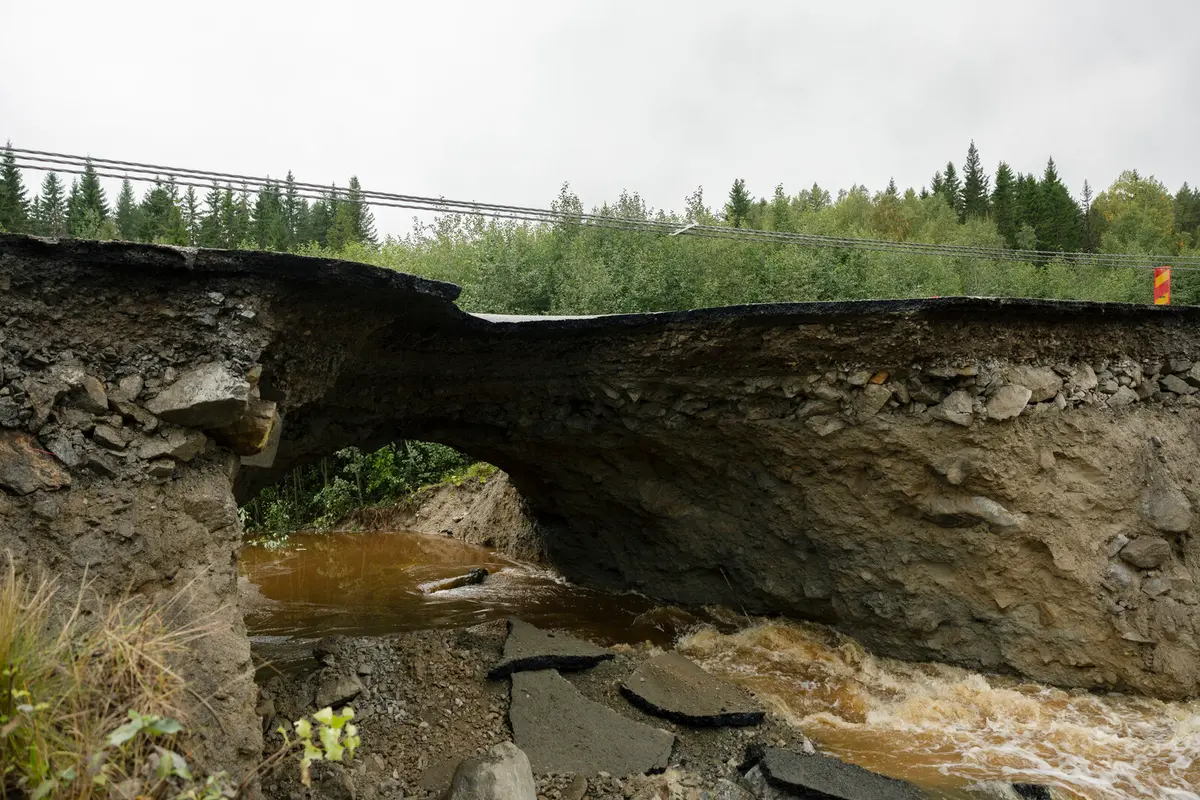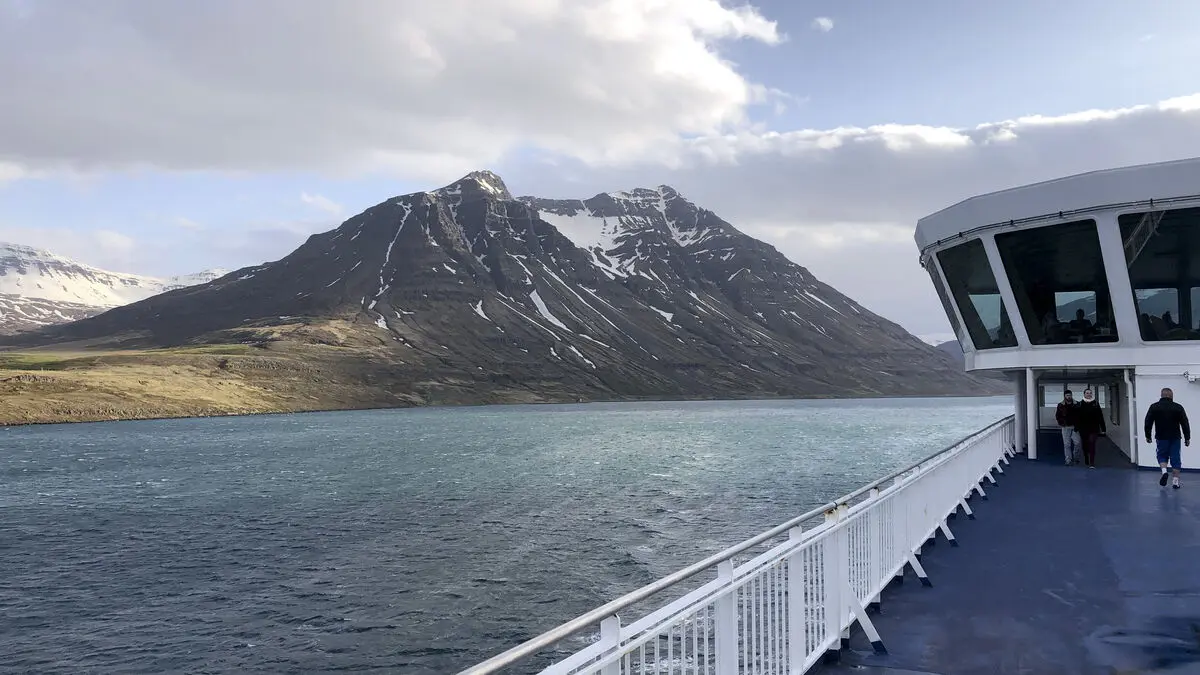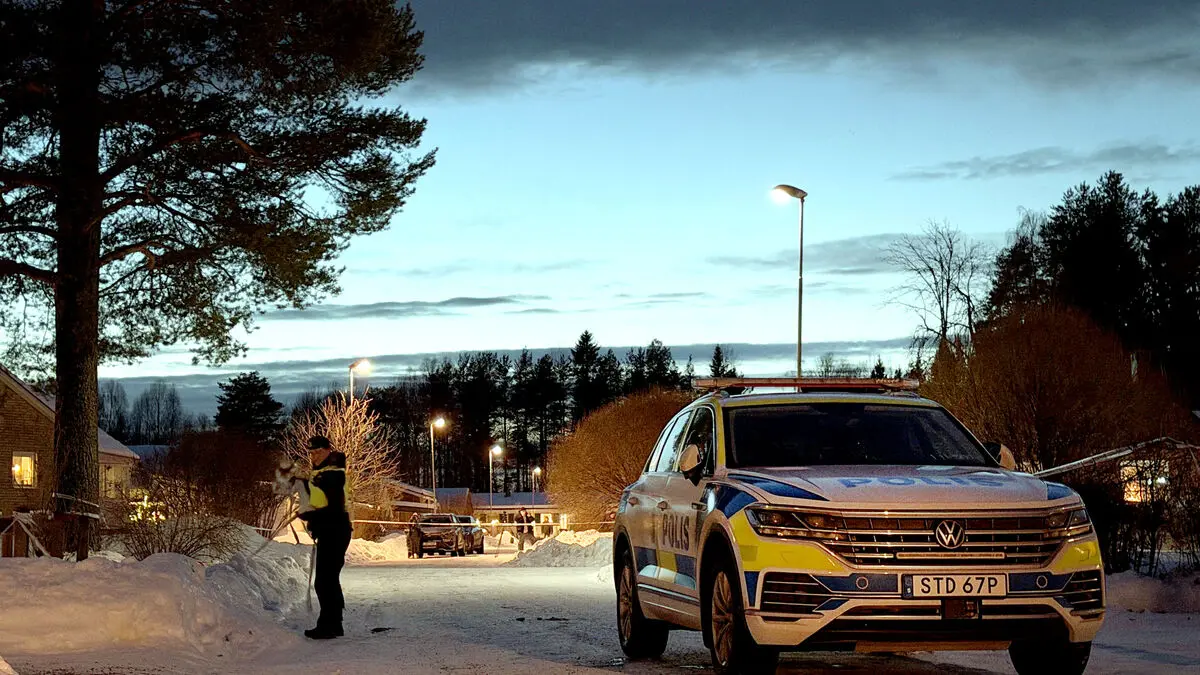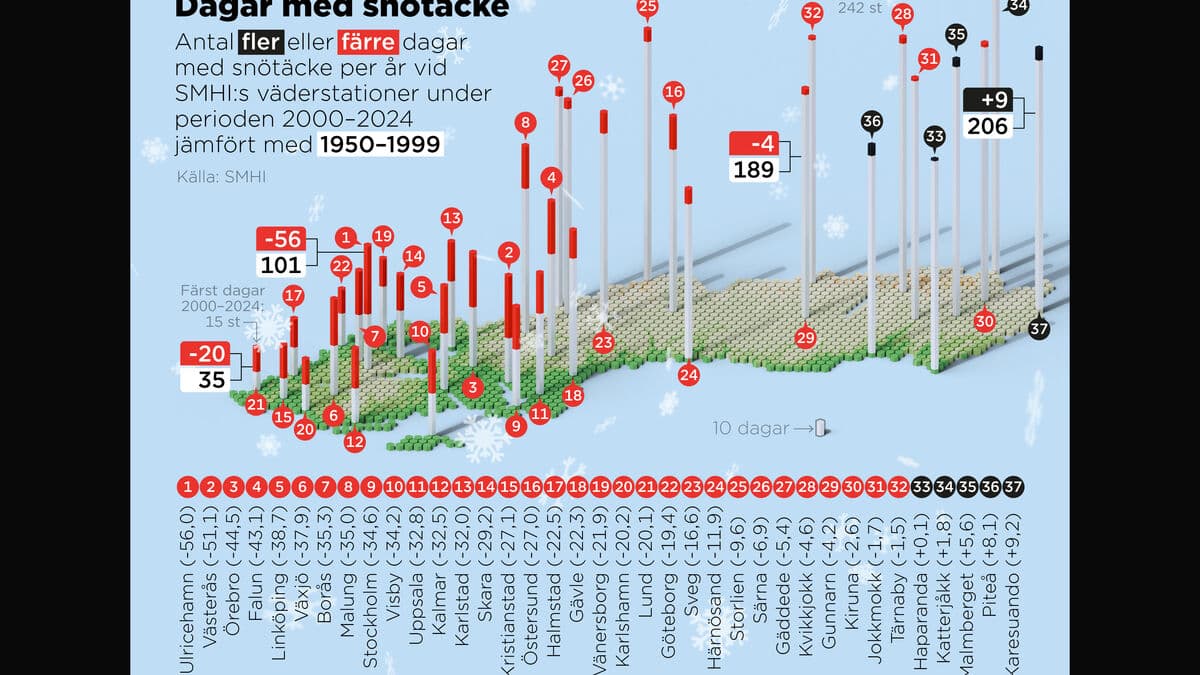Up to 100 millimeters of rain fell in a short time on Sunday and mainly affected Härnösand, Kramfors, Sollefteå, and Örnsköldsvik. Roads were washed away and two trains – one loaded with timber and one with lithium and ammunition – derailed.
According to the Minister for Infrastructure, "all available resources" are being used in the work on damaged roads and railways.
Resources are being brought in from different parts of Sweden, and we have a crisis management team activated. We also have all the financial resources needed to handle the work now, and minimize similar events in the future, says Andreas Carlson.
"Risk of copper thefts"
According to Carlson, there are currently no forecasts, but he says that the work will take time, and urges patience. He also appeals to the public to keep an eye on tracks that are not being used.
Look for any deviating patterns. There is a great risk of copper thefts when much of the railway is down. You can call the police and tip them off.
About 40 roads are damaged so badly that they have limited accessibility or are completely closed off. According to the Swedish Transport Administration, some of these have begun to be restored.
National Road 90 we hope to be able to open by Friday morning, that's the forecast now, says the Swedish Transport Administration's department manager for maintenance Henrik Sundquist at the press conference on Monday afternoon.
A risk area
At the same time, he emphasizes that the opening of other roads may be delayed until after this week and urges the public to respect closed roads.
It's a risk area and not entirely safe to be in certain places.
The Swedish Transport Administration estimates that the closure of the tracks where the trains derailed will be "very long". And it's not just freight traffic that's affected, passenger train traffic is completely still between Sundsvall and Umeå due to flooding. There is still no forecast for when traffic can return to normal.
Some parts of the tracks are under water. There, the water must drain so that we can inspect and see if the actual embankment has been damaged, if there's anything we need to fix or if it's safe to let traffic pass, says the Swedish Transport Administration's press communicator Peter Jonsson.





